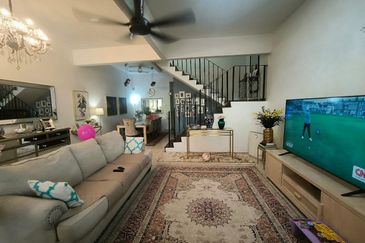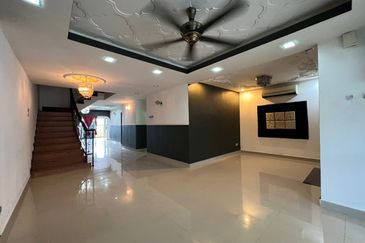
Getting the keys to your new home is probably the most exciting part of the homeownership process, especially after having to wait several years for the completion of the project.
“The developer will usually hand you the keys and show you the unit at the same time. They will also hand you the defects reporting form as you tour your unit for the first time,” says Canaan Building Inspection Sdn Bhd project director Joshua Kang.
“Always remember, you have two years to check through your unit, mark the defects and rectify them. This means you do not need to rush to submit the defects report at your first inspection,” he stresses. Indeed, he adds, this is one of the most common mistakes made by new homeowners.
It is important for homeowners to know their rights and what to do when receiving their new units from the developer.
“Many owners do not inspect their units. And when they do, many of them don’t know what to do when the developer does not respond to their defects claim. They often just allow the developer to escape from their responsibility,” says Kang.

If a developer does not reply to your complaints within 30 days after submitting the defects report, you can carry out the rectification works first and claim the rectification cost from the developer.
But before that, what is the first thing to check for when you step into your new unit? According to Kang, water and power connectivity is the first thing to check, to ensure the water taps or power points are functioning.
The developer is responsible in arranging for the water and power application for all homeowners. However, if a homeowner does not respond to the application notice or refuses to pay for the application fees, the developer will not take responsibility for that.
Do-it-yourself home inspection:
1. Flooring
- Consistent colour tone; no stain marks; no cracks and damage; no hollow sound when tapped
- Joints between floor finishes must be consistent, neat and aligned
2. Wall
- Consistent colour tone; no stain marks; no cracks and damage; and no hollow sound when tapped
- No sign of delamination (such as wallpaper peeling off)
- Edges of walls must be straight, aligned and consistent
3. Ceiling
- Consistent colour tone; no stain marks; no cracks and no damage
- Ceiling surface to be smooth, even, and not wavy and sagging
- Ceiling manhole to be flush to the ceiling
- Paintwork with good opacity and no brush marks
4. Door
- No visible gap between door and wall; only consistent gap of no more than 5mm between door leaf and frame is allowed
- Aligned and level with wall
- No rattling sound when the door is closed; ease in opening, closing and locking
- Door accessories with good fit and no stains
5. Window
- No visible gap between window frame and wall
- No stain marks and visible damage on window frame or glazing; no sign of rain water seepage
- Ease in opening, closing and locking; no squeaky sound
- Accessories with good fit and no stains
6. Fixtures (items that are permanently fixed in the unit, such as the toilet and cabinet)
- Neat and consistent joints surrounding the fixture
- Welding joints need to be rounded and flushed
- Level and aligned, no stain marks and visible damages
- To be securely fixed, functional and safe
7. Mechanical and electrical fittings (such as power points, switches, intercom and air-conditioner)
- Joints properly sealed and marked; no visible gaps
- Aligned, levelled and straight
- Securely fixed, functional and safe; no leakage at joints
- No sign of missing or defective accessories
Common mistakes by homeowners
- Submitting the defects report in a hurry
- Start renovation or refurbishment works before defects in the unit are rectified. The developer could argue that the damage is caused by your contractor and not the developer.
- Compromise the defects and move in before rectification works
- Miss out details such as hollowness behind a tile, an uneven wall or floor, a faulty switch, power point or tap
- Give up on the claims for rectification works when the developer fails to respond or solve the problem
What to do if the developer does not respond to defects report?
- Make sure the defects report has been submitted for more than 30 days and no acknowledgement and updates have been received from the developer.
- Get quotations for rectification of defects from at least two to three reputable contractors.
- Write a letter of intention with the quotations attached to notify the developer that rectifying works will be carried out by the homeowner if there is no news from the developer within two weeks from the date of the letter of intention. Also send a copy of the letter and quotations to the lawyer who holds the last 2.5% of payment for the unit until the defect liability period ends.
- If there is no news from the developer after two weeks, the homeowner can file a complaint to the housing tribunal to verify the defects and quotation of costs of rectification works. This is to prevent the developer from arguing that the quotations made are unfair.
- Carry out the rectification works and claim the cost from the developer. Also attach the claim and letter to the lawyer.
This story first appeared in EdgeProp.my pullout on March 2, 2018. Download EdgeProp.my pullout here for free.
TOP PICKS BY EDGEPROP

Jalan Tuanku Abdul Rahman
KL City, Kuala Lumpur

Damansara Heights (Bukit Damansara)
Damansara Heights, Kuala Lumpur























